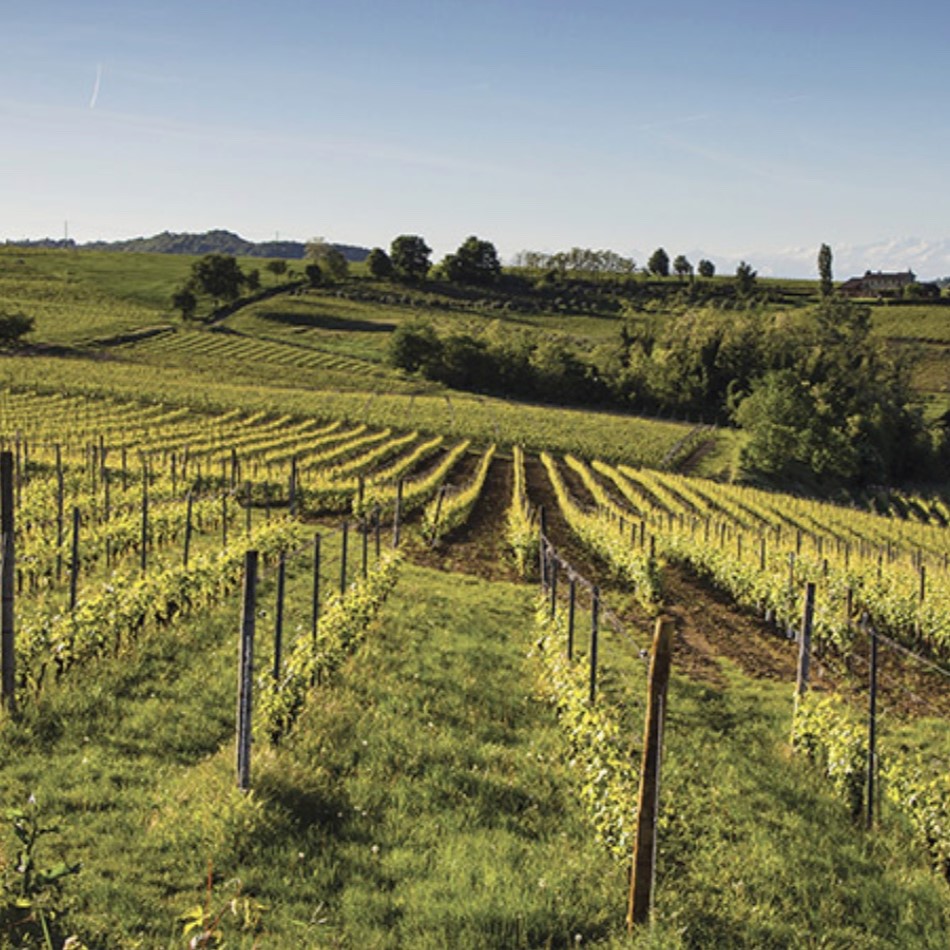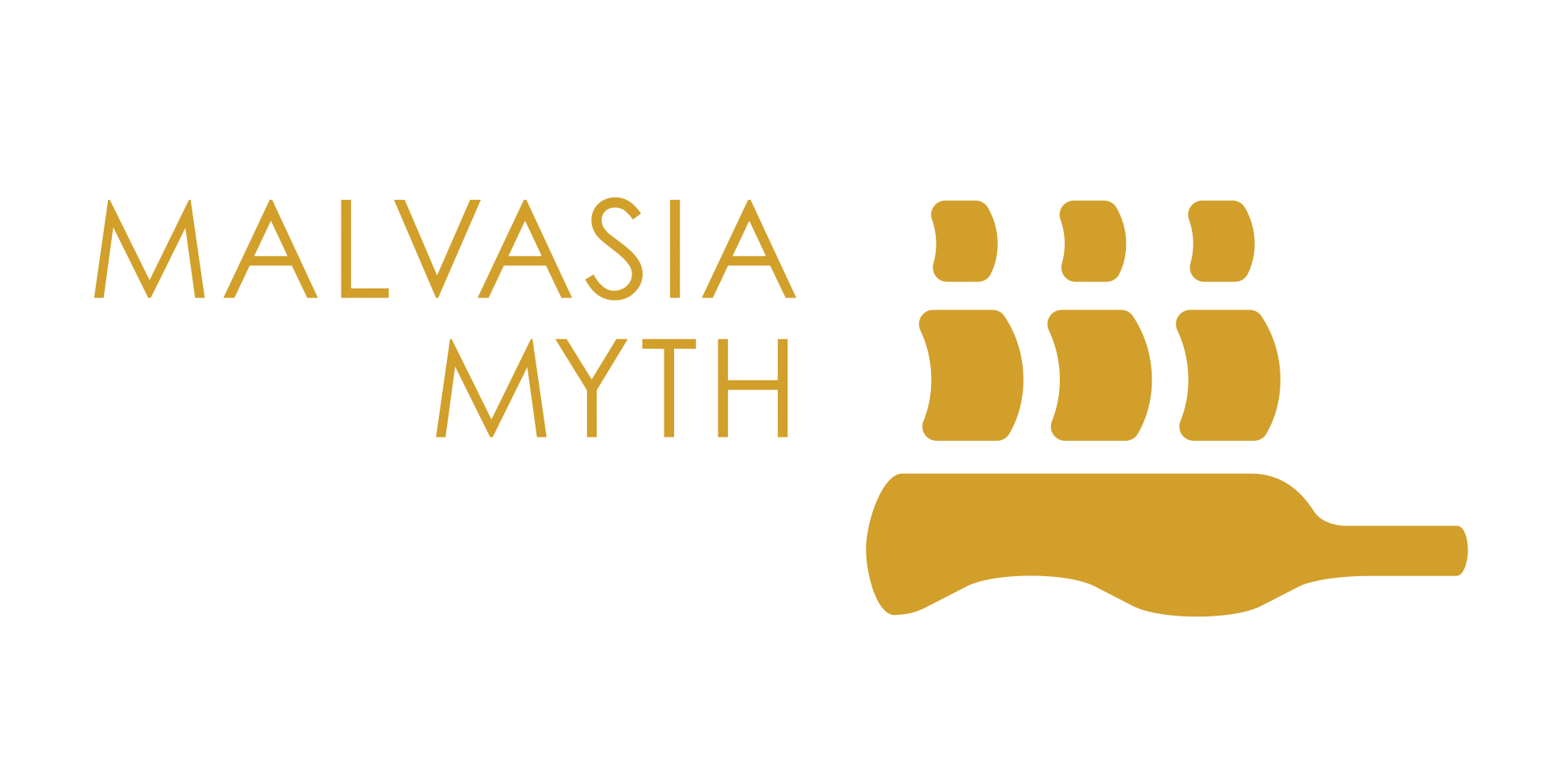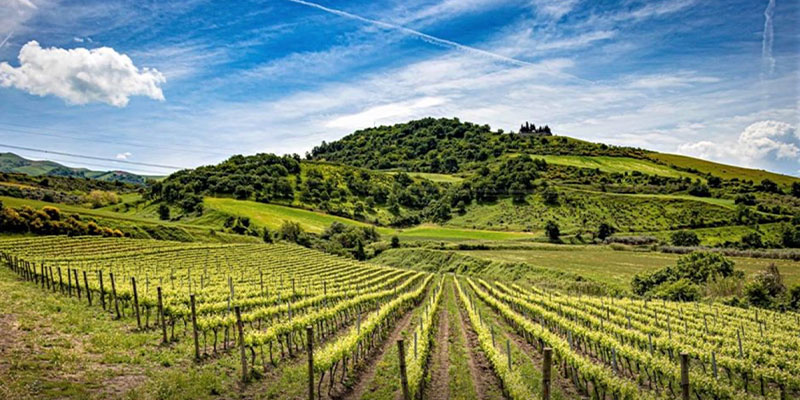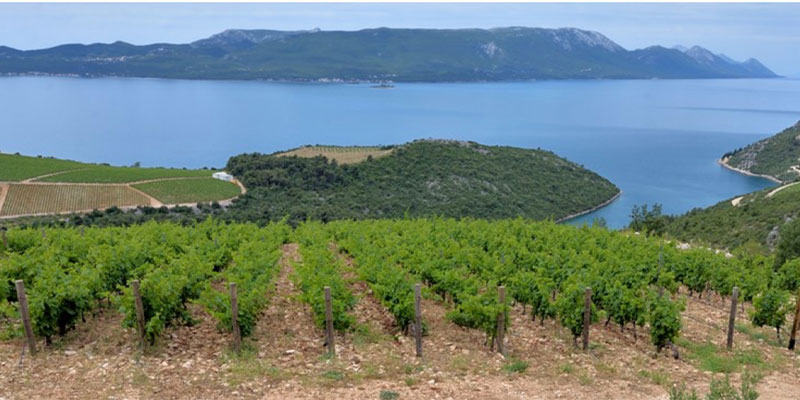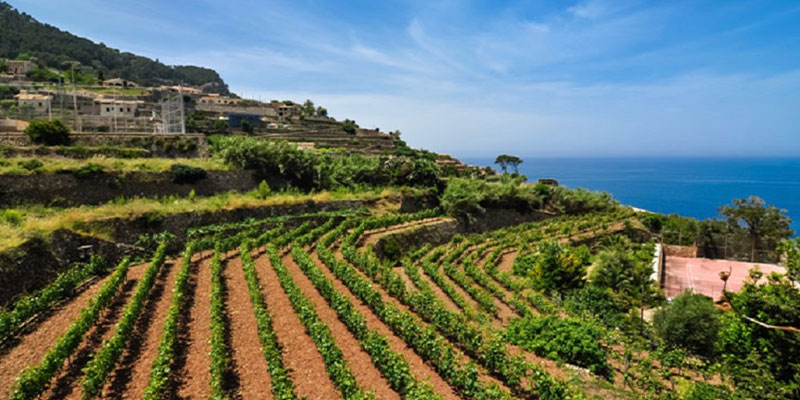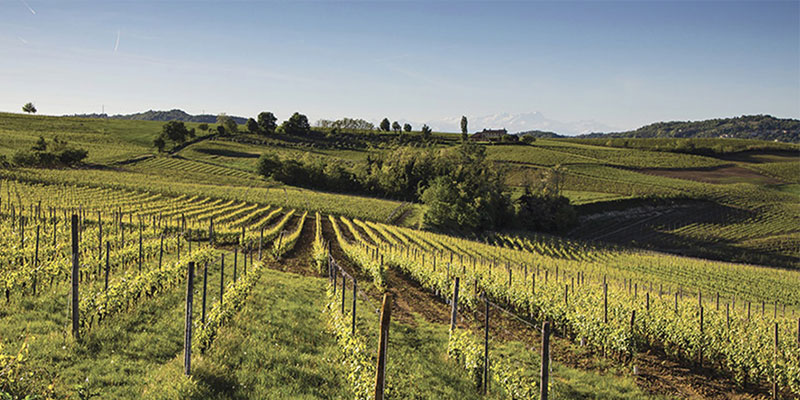
The name Malvasia indicates many vines, most of them white berried, geographically distributed throughout Italy. There are 19 varieties mostly white berried varieties registered in the National Register. Some produce grapes with a more or less marked aromatic flavour, such as Malvasia di Candia Aromatica, Malvasia Istriana and Malvasia Lunga or Chianti. In addition to these, with white fruit, there are black Malvasias, such as those of Casorzo, Schierano, Basilicata, Brindisi, Lecce.
Although of different origins, all these vines share some basic characteristics: in fact they all have, albeit with different degrees of intensity, a spicy fragrance of musk and apricot and rather high sugar residues.
These characteristics make them particularly suitable for the production of sparkling and raisin wines.
In the Parma and Piacenza area, in Emilia Romagna, the Malvasia di Candia Aromatica vine has a particularly rich and complex aromatic set of scents, which includes a wide spectrum of primary aromas of orange, citron, lemon, fruity notes of peach, apricot, and floral (acacia, freesia, lavender) and is the primary component of a certain number of dry and semi-sweet wines, in the still, lightly sparkling, sparkling and passito versions.
The region of Piedmont, from an oenological standpoint is certainly well known for its noble red wines and for the appreciated Moscato d'Asti but, in the hills of a circumscribed territory of Basso Monferrato, two interesting red berried Malvasia grapes are grown: Malvasia of Casorzo and Malvasia of Schierano.
The first takes its name from the nearby town which falls within the production area together with the municipalities of Altavilla Monferrato, Grana, Grazzano Badoglio, Olivola, Ottiglio and Vignale Monferrato. The result is a highly pleasant, slightly aromatic and sweet red or rosé wine in the sparkling, “spumante” and “passita” versions. The Schierano variety, also known as "short bunch" Malvasia, is also derived from well-exposed vineyards with a clay-limestone ground matrix and gives life to the Malvasia of Castelnuovo Don Bosco Doc, a name deriving from one of the six Asti municipalities admitted to this production. The others are Albugnano, Passerano Marmorito, Pino d'Asti, Berzano and Moncucco. The wines are equally red or rosé, pleasantly aromatic and sweet in the sparkling and “spumante” types. Both are the best production of their terroirs and keep the absolute quality of Monferrato winemaking standing high.
In the north east regions of Italy and more precisely in Friuli Venezia Giulia we see the presence of one of the most prestigious white berried grapes: Istrian Malvasia, known otherwise under the name of Malvasia friulana or Malvasia del Carso.
We could define it as the most Central European of the Malvasias, because in addition to being planted in this region for centuries, it is the authentic protagonist of important wines also in Slovenia and Croatia and, from a genetic point of view, research has highlighted its own particular originality compared to others by the same name. It finds a very favorable habitat in the high quality vineyards in the area that extends between the Colli Orientali, Collio and Carso, and is often characterized by the presence of “ponca”, which, geologically speaking, we define as “flysch”, represented by more or less rich layers of marl and sandstone rich in calcium, deriving from fossil deposits dating back to before the emersion of the lands from the ancient sea. In addition to the work of the winemakers, the rest of the added value of Istrian Malvasia comes from the very favorable local temperate climate, thanks to the meeting of the breezes that descend from the Julian Alps and those that blow from the Upper Adriatic. The wines obtained by this grapes are generally much appreciated, both elegant dry whites obtained with the classic “white process”, and complex macerated wines obtained by a technique that uses contact between the skin and must for unique products and for various gastronomic combinations.
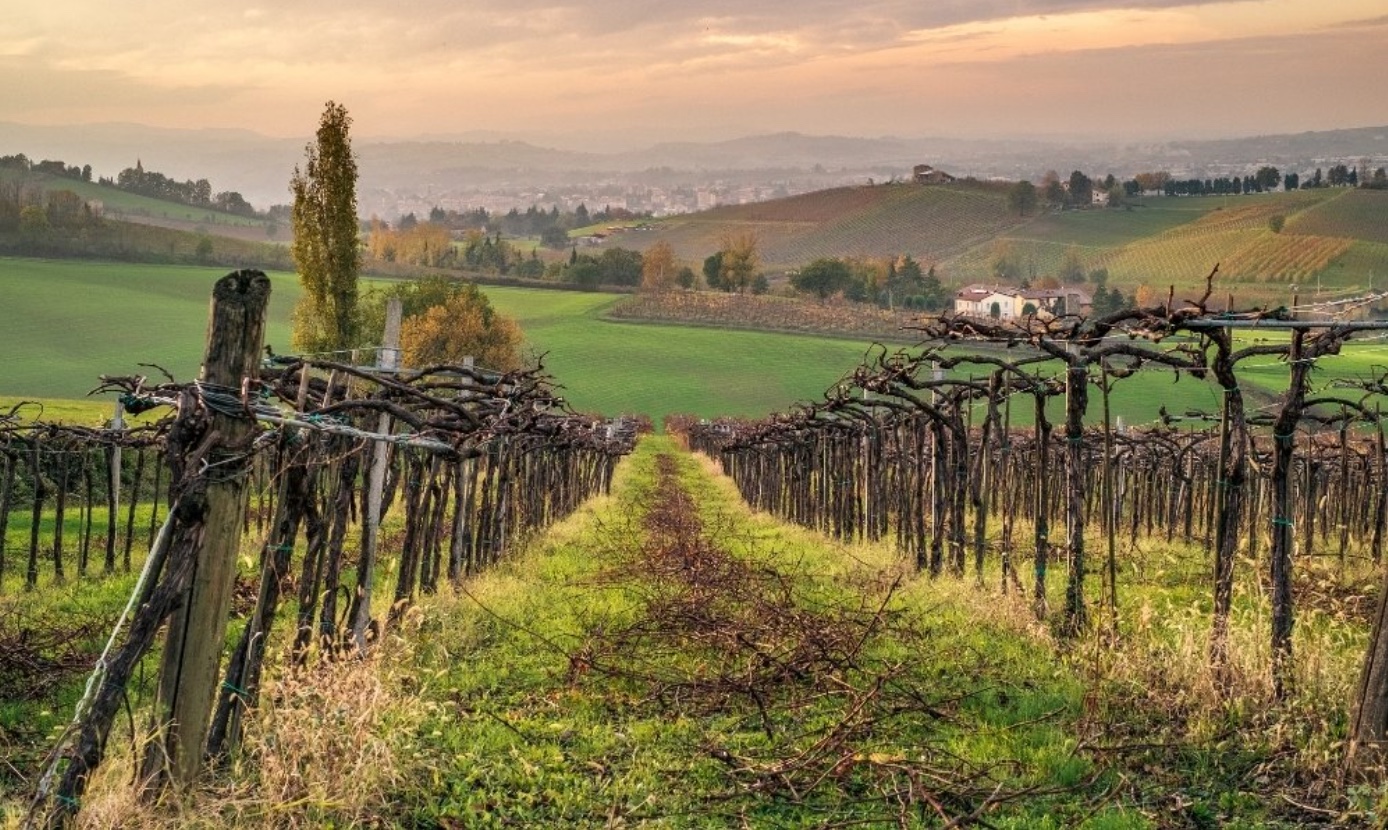
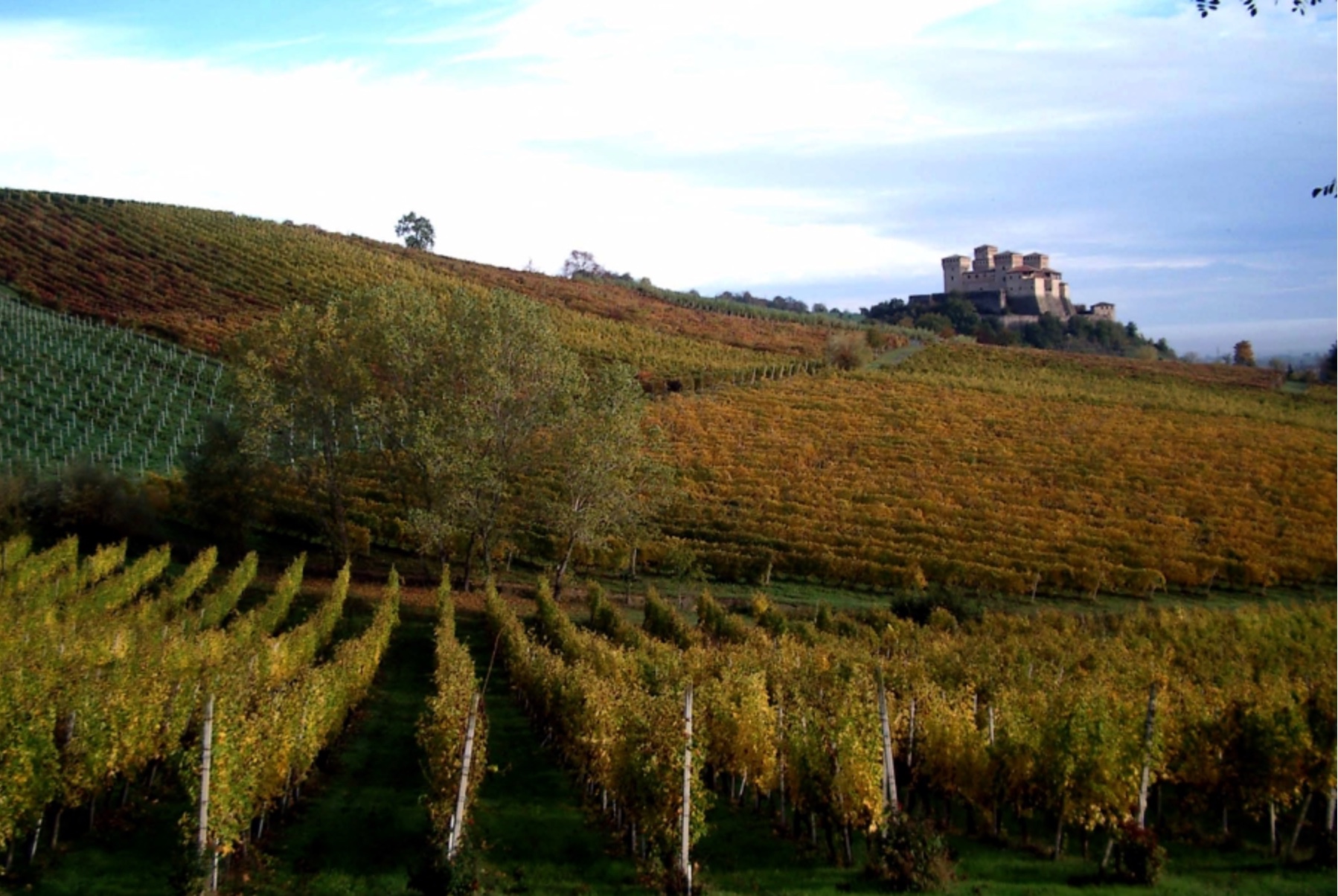
The great journey in a small territory that follows the most significant Italian Malvasia wines continues in Tuscany, the cradle of the Renaissance which has always put so much beauty into its wines as well. One of these, and undoubtedly among the most famous, responds to the name of Vino Santo. It can be primarily traced to the Doc vines Vino Santo del Chianti and Vino Santo del Chianti Classico, and its distinguishing characteristic is the long white Malvasia grape that very often joins in the making of such an oenological masterpiece together with the Tuscan Trebbiano vine. The Bianca lunga (long white) has several synonyms and among others it is also mentioned as Malvasia del Chianti or Malvasia di Montegonzi. Although it is widespread in other Italian vineyard contexts, the former Medici Grand Duchy remains its homeland of choice. After the canonic drying of the bunches, it becomes the irreplaceable ingredient of the rare Vin Santo which is seasoned in barrels for a few years before bottling and to which it brings a creamy quality and a fullness of taste to the sip, thus balancing the marked acidic prerogative of its partner Trebbiano.
Ending our list of Italian Malvasias, we move to other parts of the boot shaped peninsula to meet a variety of ancient and intimately Mediterranean origins, present indeed in Sicily, Sardinia, and Calabria, and which bears the respectively the names of Malvasia delle Lipari, Malvasia di Sardegna and Greco di Bianco. From a genetic point of view we are faced with the same identity, bearing in mind that in the end the territorial markers, together with local know-how, determine the sensorial expression of each individual wine. Malvasia delle Lipari, it goes without saying, grows luxuriantly in the vineyard plots on the Aeolian Islands, especially in Lipari and even more in Salina. This is recognized as the most luxuriant and wine-growing island of the archipelago and still the undisputed homeland of this vine. From its most important volcanic crus such as Capo Faro, Malfa and Valdichiesa, bunches are gathered which, in addition to giving the orthodox sweet raisin version, in recent years, when processed in a different way, have given dry white wines worth of well-deserved successes and recognitions on behalf of various wineries.
In Sardinia, our grape is the star of the Malvasia di Cagliari and Malvasia di Bosa DOC wines. The first is localized in the vineyards of the Oristano countryside but above all of Cagliari. It is superfluous to underline also in this case the heterogeneity of the soils and microclimates that characterize it. It has a very limited production, both in the still and dry version and in the natural sweet one. Speaking of the second, we approach a more unique than rare wine which, despite having risked extinction, is still fortunately produced today in Planargia, in the Bosa hinterland and in neighboring localities. Malvasia di Bosa is recognized worldwide as a product of exceptional value and few other wines produced with an oxidative process can match its refinement. By resting for a few years in full wooden barrels (preferably chestnut) under “flor”, it is filled with indescribable scents and moods.
Finally, as mentioned, Greco di Bianco is a Malvasia in all respects and its pertinent territory is the entire municipality of Bianco and part of that of Casignana along the Ionian side of the province of Reggio Calabria, where the vines are planted on soils of white marl, locally called “ogghjacani”. Probably from such places of Magna Graecia, between the Aspromonte National Park and the Locride region, this type of vine was transported and planted in other shores of the “Mare Nostrum” and beyond, as we will see. The production of this delightful wine, exclusively offered in the sweet raisin version and marketed in the traditional Pulcianella bottle, is still limited and historically represents one of the Calabrian oenological prides.
